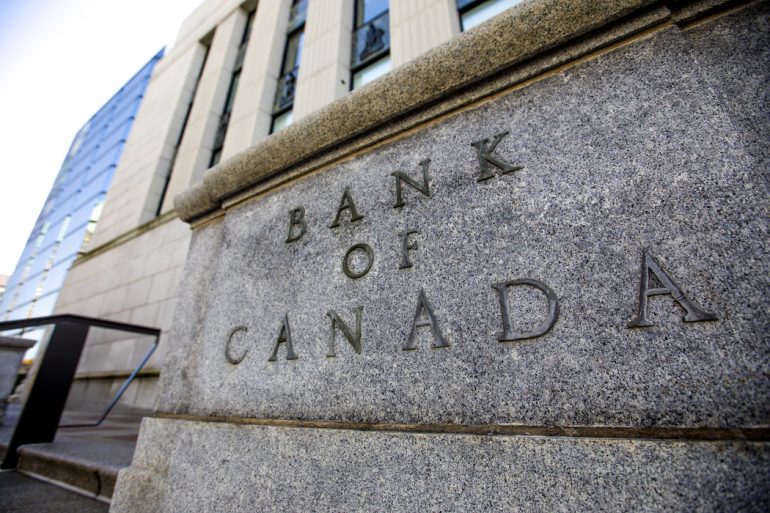With Budget 2025, financial innovators may have finally got what they have long asked for.
The freshly released federal budget includes major movement on long-awaited files in Canada’s financial services sector, including open banking and a framework for the issuance of stablecoins.
Adriana Vega
“It’s a huge budget for FinTechs.”
Fintechs Canada
BetaKit was the first to report that FinTech leaders expected movement on open banking in the budget. What they got was significantly more: a commitment to introduce the remaining piece of legislation needed to make the financial data-sharing system a reality, with a target of mid-2027 for “write access,” or the ability to switch accounts or make bill payments.
The open banking legislation, which was already drafted at the time of last year’s Fall Economic Statement, will be included in the Budget Implementation Act in two weeks. The legislation will see the open banking system finally enter “phase two” of implementation, initially outlined in the 2021 Advisory Committee on Open Banking final report.
The government also said it would add a data-mobility right in the Personal Information Protection and Electronic Documents Act. The budget also provides $25.7 million over five years and $5 million ongoing annually to the Canadian Security Intelligence Service and the Royal Canadian Mounted Police to support “national security safeguards” in the Consumer-Driven Banking Act.
Canadian FinTech leaders have been calling for a consumer-directed finance system for years, a measure they say will improve financial service competition and lower prices for consumers. Proponents argue that open banking would establish a secure way for customers to share their financial information with third parties and eliminate the need for insecure “screen-scraping,” where customers share sign-in details.
“It’s a huge budget for FinTechs,” Fintechs Canada executive director Adriana Vega told BetaKit.
In a LinkedIn post, Vega framed the budget commitments as increasing competition in the financial sector, calling them “the result of years of collaboration between policymakers and industry.”
The budget update also came with a major change in oversight. Responsibility for the open banking system has now been transferred from the Financial Consumer Agency of Canada (FCAC) to the Bank of Canada, and $36.9 million previously allocated to FCAC has been clawed back.
RELATED: Canada’s FinTech industry enters new era as Bank of Canada taps first payment service providers
The feds appointed the FCAC to oversee open banking in Budget 2024 and said it would table a second piece of legislation that fall. But the 2024 Fall Economic Statement (FES) delayed the legislation and the system’s launch to 2026.
“Given that Bank of Canada is already supervising the country’s payment system, there’s good logic to having it supervise open banking as well,” Borrowell CEO Andrew Graham told BetaKit. “The Bank of Canada has a strong reputation for competence.”
Another repeatedly delayed initiative got an official update in the budget: the Real-Time Rail (RTR) system, an infrastructure meant to facilitate instant, cheaper payments. The budget reaffirmed that RTR would be operational in 2026, consistent with the last update from Payments Canada. The feds’ target of mid-2027 “write access” for open banking appears dependent on the release and “widespread use” of RTR. Many FinTech companies added to the Bank of Canada’s registered PSP list can now get membership to Payments Canada and access RTR.
Movement on stablecoins
As a change from the previous Liberal government’s approach to payments innovation, this government is indicating it wants to move quickly to legislate stablecoin issuance. BetaKit previously reported that language regarding stablecoins would make an appearance in Budget 2025.
Stablecoins are a form of cryptocurrency pegged to a fiat-backed currency such as the United States dollar. The legislation, which will be tabled as part of the Budget Implementation Act, will require issuers to maintain and manage adequate asset reserves, establish redemption policies, implement risk management frameworks, and protect consumers’ sensitive data. The legislation will also include national security safeguards.
Industry groups have repeatedly pushed for a stablecoin framework, arguing that Canada will be left at the mercy of a US-dominated payment system without a strategy. Ninety-nine percent of stablecoins are pegged to the US dollar in the global market, according to JPMorgan.
Lucas Matheson, CEO of Coinbase Canada, has publicly argued for a Canadian stablecoin framework. He said in a statement to BetaKit that he was “encouraged to see real movement” in the budget.
“The government’s commitment to introduce stablecoin legislation signals that Canada is ready to lead on digital innovation,” Matheson said.
RELATED: Stablecoins are at a regulatory crossroads in Canada. What’s next?
Koleya Karringten, executive director of the Canadian Bitcoin Consortium, told BetaKit she was “pleased” with the update. “These measures signal that Canada is moving toward recognizing stablecoins as essential payment infrastructure,” she said.
Despite the government’s movement on the file, the legislation won’t necessarily establish all stablecoins as payment instruments, as industry groups had demanded, but will only regulate the issuance of stablecoins. How the digital assets are used will determine whether they are considered payment instruments or securities. For instance, payment instruments would be subject to rules under the Retail Payments Activities Act (RPAA). The RPAA will be amended to allow PSPs to carry out payment services using “prescribed stablecoins,” the budget said, with more details coming in the legislation. If stablecoins are used as securities, they will be covered by applicable provincial securities regulations.
To move this forward, the budget allocated $10 million over two years, starting in 2026-27, from its remittances to the Consolidated Revenue Fund that effectively serves as the government’s central bank account. Future administrative costs are estimated at $5 million per year and will be offset by stablecoin issuers.
Feature image courtesy Bank of Canada via Flickr.


